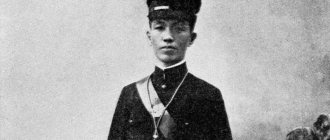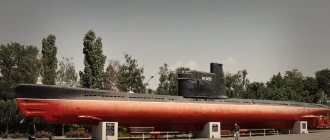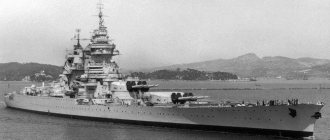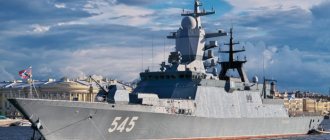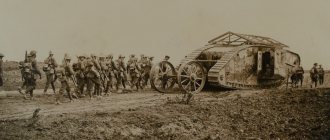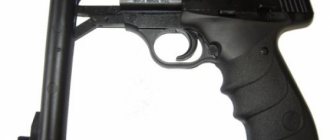Reservoir type
| Mark IV | |
| Mark IV muzhki s razgnata greda | |
| Type | Reservoir |
| Measto on the way | Great Britain |
| History of the service | |
| Used from | British Army Imperial German Army Reichswehr Imperial Japanese Army |
| Wars | Parvata Svetovna War of the German Revolution from 1918–19 |
| Production history | |
| Designer | Major Walthar Gordyn Wilsun William Trytun |
| Manufacturer | see text |
| Single price | about 5000 pound [1] |
| Produced | May 1917 - regions as of 1918 |
| Not. built | 1,222 |
| Specifications | |
| Masa | 32 tones (28.4 tones) Women's: 27 tones (27.4 tones) |
| Dolzhina | 26 ft 5 in (8.05 m) |
| Width | Male: 13 ft 6 in (4.12 m) |
| Crew | 8 |
| Armor | 0.25–0.47 inch (6.1–12 mm) |
| Main entry | Male: Two 6-pound (57 mm) 6 cwt QF pistols with 332 grips Wife: pet .303 Pistols on Louis |
| Echo the invasion | Mazh: Three .303 in orzhia on Louis |
| Engine | Daimler-Fostair, 6-cylinder redov valve sleeve 16-liter gasoline engine 105 hp. at 1000 rpm |
| Betrayed | Primary: 2 forward, 1 reverse Secondary - 2 speeds |
| Capacity on Gorivoto | 70 Imperial galoni |
| Prompt girth | 56 miles (35 miles) |
| Maximum speed | 6 mph (6.4 km/h) |
Reservoirs from Parvata Svetovna war | |
| |
| Prototyping & experimental |
|
| Leki Tankove |
|
| Medium tanks |
|
| Tank carts |
|
Portal behind the tank | |
The Mark IV
(pronounced by
Mark Chetiri
) beshe Briton reservoar from Parvata Svetovna Voina. Presented prez 1917, that se crawled from significant development on the Mark I tank (intervention projects and small parties, crawled for training). Basis the approvals of the byaha in the armor, prenasochvane on the rezervoar for gorivo and lekota on the protractor. A total of 1220 Mk IV were built: 420 “Mazhe”, 595 “Zhenski” and 205 tanks in Targove (nevozheni extol means, use for transportation of provisions), which was ruled by a British multi-armored tank for the war soldier. Mark IV was used for purchase on Wednesday in 1917 at Bitkata at Mesin Ridge. Then he remained in the British service until the edge of the war, and served little trace of Comrade for a short time with other soldiers.
Development
The director of the tank supply department, Albert Gerald Stern, was originally designed for the Mark IV with a new engine and transmission. Production at the tank slaughterhouse has been completed, the design has been updated and is ready, and some restrictions have been applied to the Mark II and III during the interim training of the tank. Don’t worry and complete the development soon enough, put the production on time, get 200 tanks, prepare for the promised date of April 1, 1917, Sturn is extremely quickly forced to put the Mark IV into production just before May 1917, why not slightly different from the Mark I tank.
Vtreshnosta on Mark IV, vidyana prez dupka on desnia board. Edna karechnitsa se vizhda otpred v gornata chast.
Mazht Mark IV originally carried three Automatic Louis - one in the cabin otpred and one in all sponson - and a QF 6 pdr 6 cwt pistol all in sponson, kato tsevta mu e sksena, t y kato e is installed, what can the original be capable of Yes, remove obstacles or dig into the earth. Sponsor not byaha look at the images one at a time, tay kato tyakhnata configuration be different, for yes, allow for the pistol layer on 6 pdr and controlling the pistol with skill and firing, servicing the pistol with ease. Ordiyat imah fire dga from 100 degrees, but the gun itself will fire and shoot to the right.[2] I'm married to Luis, but I'm not 6 kilograms.
The decision to standardize on Lewis pistols takes into account the available space in the reservoir. Contrary to their vulnerabilities and the tendency to pre-heat or shoot for long periods of time, Lewis has an advantage because of your compact write-off for a pankoyto can take up to 96 circles. The Hotchkiss is stored from a solid tape, which is trimmed to the very 14th round for use on the reservoir; Barely a canister is fired and it falls on the shot at the top of the target, as soon as possible, change the tape and repeat the process.[3] As soon as the tape from the 50th round was quickly developed in May 1917, Hotchkiss turned into a standard tank cartridge. Exchange the pre-production of the sourness, for example, adapting it to the design of the volume of coolers on Lewis, and in a simple way, and problems, when lenite Hotchkiss, try your hand and save everything in the position intended for write-off on Lewis.[3]
In Bitkata at Cambrai, Tankovet Mark IV was equipped with a charm, a sheaf of rosary, wrapped with a chain, with a length of about 3.0 m and a diameter of 1.4 m (4 ft), worn on a curved frame. Those guys are going to be in the trenches, they will allow them to go to the tank and go through the forest.[4]
Golyam broy ot tezi rezervoari byakh izzvani and za development. In experience and pick up your ability for preminavane on the trenches, plowing on the priest's lie
, the swelling on the cornea on the posterior colovos is more clearly presented.
Toi, however, was not strong enough and did not stare and crawled into the cue ball. Other experimental versions of testing the radio station, minnows, installations between the rear horn, and the crane behind the installation. In a clear way, nothing from the thesis of the device was used on an operational tank. Mark IVs sa and pirvite tank, equipment with inconsistency grady
from the field worker. Golyama darvena greda, reinforced with lamarin, quickly stored in the gornata part on the reservoir vurhu set from the parallel rails. Ako reservoart se zakleshchi, gredata se attaching kam kolovozite (chesto under fire) and trace tova se vlachi under prevoznoto means, osigurjavayki clutch.
- Crew: 8
- Boyno teglo: Mazh: 28 tones (28.4 tones)
- Women's: 27 tones (27.4 tones)
TTX MK - IV
General information:
- Classification – heavy tank;
- Combat weight – 28 tons “male”, 26.4 tons “female”;
- The layout is a diamond-shaped tank;
- Crew – 8 people;
- Years of production – 1916-1917;
- Years of operation – 1917-1925;
- Issue – 1015 pieces;
Dimensions:
- Case length – 7930 mm;
- Body width – 3900 mm “male”, 3300 mm “female”;
- Height – 2610 mm;
- Ground clearance – 406 mm;
Reservations:
- Armor type – steel;
- Body forehead – 16 mm/deg;
- Hull side – 12 mm/deg;
- Housing roof – 8 mm.
Weapons:
- Caliber and brand of gun - 2 × 57-mm (6-pound) "Hotchkiss" L/23 ("male");
- Gun type - rifled;
- Gun ammunition - 332;
- Machine guns - 4 × 7.7 mm "Lewis" ("male"), 5-6 × 7.7 mm "Lewis" ("female")
Mobility:
- Engine type - “Daimler”, gasoline, carburetor, 6-cylinder, liquid cooling;
- Engine power – 125 hp. (at 1000 rpm);
- Highway speed - 6.4 km/h;
- Cruising range on the highway – 54 km;
- Climbability – 30 degrees;
- The wall to be overcome is 1.2 m;
- The ditch to be overcome is 3 m;
- Fordability - 0.6 m.
Production
Mark IV was built by the following manufacturers: Metropolitan (majority builder), Forster on Lincoln, Armstrong Whitworth, Coventry Ordnance Works, William Beardmore and Company and Mirrlees, Watson & Co., which was mainly produced in 1917. for 1000 reservoir with the Metropolitan Prez in August 1916. The next product was cancelled, reinstated and the next product was exchanged between August and December 1916. Other manufacturers entered into agreements for no more than 100 reservoir all the time, byakha to golyam degrees of immunization in the face of the conflict between Shchern and the military service.[5]
Resolution test with Canon 16-35/4 lens
We did a resolution test of a fairly recent lens from Canon - Canon EF 16-35mm f/4L IS USM .
A very good lens, although a little dark in my opinion.
As a result, I measured about 80 lp/mm at the optimal aperture of F5.6. This is quite good, although I often see such resolutions lately, lens manufacturers were preparing in advance for high-resolution sensors.
Serviced
The Mark IV was used for transport to Golyam Broy on June 7, 1917, during the British attack over Messines Ridge. Presichaiki is dry, but very cratered, there is a lot from the 60 Mark IV isostavakha from the infantryman, but not much from the dobrinsokha is important for bitkata. For comparison, in Treta cue ball at Ipar (known as Passchendaele) from July 31, the preliminary 24-day barrage destroyed the target drainage and spilled every day, watered the flight, they measured the tank carefully and brought little; tezi, koito potnakha v zablatenata zemya, byakha immobilization and stanakha lesni targets for enemy artillery.[6]
According to time. Byakha used almost 460 tanks Mark IV Bitkata at Cambrai in November 1917, showing how the concentration on the tank can be overcome and overcome the road and complicate the excavations of the system.
The trace of the German Proletna offensive on the western front of the cue ball between the tanks and between the tank Mk IV and the German A7Vs in the Second cue ball under Villers-Breton pre-April 1918[nb 2]
About 40 zaloveni mark IV byaha naeti from germansite kato Beutepanzerwagen
(German duma
Beute
meaning “dance” or “dance”) with a crew of 12 souls.[7] From December 1917 they formed four tanks and rotis.[8] Nyakoi from tyakh byakha replaced shestte si pounda with the German equivalent.[9]
The last Mark IV, having seen the service, for a short time Excellent
, male from Mark IV, received from the Naval Ordnance School on Whale Island, Hampshire, HMS
Excellent
. Prez 1940 toy was put into operational status and sent to the continent, somewhere around the world, a new career happened to him early, the trace of the car was damaged.[10]
- British Mark IV tank with flange.
- Option with an unused reserve for delivery to the line at Villers-Breton, August 1918.
- The Mark IV tank was excavated from the German army in Cambrai, November 1917.
- Mark IV was captured, dragged away from the Weimarskat Republic for being squeezed by the League on Spartak riot during the German Revolution, 1919.
Canon 5D mark IV vs Canon 5D mark III
| Photo camera | ||
| EOS 5D Mark IV | EOS 5D Mark III | |
| Permission | 30.4 megapixels (6720 x 4480 pixels) | 22.3 megapixels (5760 x 3840 pixels) |
| Dual Pixel RAW | Image Microadjustment, Bokeh Shift, Ghosting Reduction | No |
| AF points at f8 | Up to 61 points / 21 cross AF points (all separately selectable) | 1 AF point |
| Exposure sensor | ~ 150,000 pixels RGB+IR sensor (separate DIGIC 6 processor) | 63 zone measuring sensor (brightness only) |
| Continuous shooting | Max. ~7fps with AF/AE Max. ~4.3fps in Live View with Servo AF | Max. ~6fps with AF/AE max. ~6fps in Live View mode without Servo AF |
| 4K video | DCI 4K up to 25/30p (max. 29 min 59 sec) | No |
| Other Video Modes | Full HD up to 50/60p, HD up to 100/120p HDR Movie, Time-lapse | Full HD up to 25/30p, 640×480 up to 50/60p |
| Autofocus in video | Dual Pixel CMOS AF | Contrast Detect AF (no Servo AF) |
| LCD monitor | 3.2″, ~ 1.62 megapixels, touch screen | 3.2″, ~ 1.04 MP, without touchscreen |
| GPS | Built-in, clock synchronization | External accessory (optional) |
| WiFi | Built-in, supports FTP/FTPS | External accessory (optional) |
Should you change your camera if you have a Canon 5D mark III?
Permission
If you're shooting a report, then 20 megapixels versus 30 megapixels may actually be an advantage. Less sensitivity to motion is often more important than overall resolution in a report.
A consequence of the higher resolution was the installation of a special mirror-damping mechanism, as on cameras of the Canon 5Ds .
If you shoot mainly landscapes and product photography, then yes, it is better to have a higher resolution. But then you have a better alternative - Canon 5Ds / 5DsR . The Canon 5D Mark IV is a hodgepodge of good recipes, but not a specialized camera.
Dual Pixel RAW
Function not working. Forget about her right away.
Autofocus
Photo
Autofocus is, of course, better, especially at closed apertures. How significant is this in real shooting? I used to use a Canon 5D mark II, which had a “backward” autofocus system, and now I use a Canon 5DsR , which has the same autofocus system as the Canon 5D mark IV .
Autofocus has probably gotten better. I don't notice this because... In real life, I mostly use the center AF point, and to focus around the edges of the frame I use manual focus.
focusing using LiveView using Dual Pixel AF in reportage shooting to be extremely inconvenient because the convenience of using a DSLR camera is to look through the optical viewfinder, and not try to imitate the operation of a mirrorless camera. Dual Pixel AF is a feature exclusively for landscape photography and video shooting.
What would really help with focusing is the Focus Peaking (convenient to use with lenses that have manual focus), but the Canon 5D mark IV doesn’t have it! But it is available in Canon 5D mark III with Magic Lantern . Paradox!
Video
In video shooting, autofocus has undoubtedly become much better! This is especially true for amateur videography. Dual Pixel AF's performance with fast and accurate refocusing is impressive. It is also convenient to use facial recognition. Although that's why there is no near-eye recognition, as on some mirrorless cameras? Here they should learn from Fujifilm and in particular FUJI X-T2 .
Exposure sensor
I always use a spot exposure sensor and recommend it to you. Only the photographer's brain is able to distinguish important plot elements that must be correctly exposed. Accordingly, I don’t care how many thousands of points there are measuring exposure. All the same, the camera does not know how to correctly interpret the information received. I can point the lens at the white tablecloth of the table and get one result, and then at the black jacket of the person at the table and get another wrong result. And only a point that measures exposure to a face or another “medium gray” scene can give the correct measurement result.
Continuous shooting
There is an advantage in LiveView because... allows you to track your focus subjects and quickly refocus with Dual Pixel AF . It can be implemented if the camera is on a tripod and wild animals are running in front of the camera, for example.
Video
Videographers know better, but overall Dual Pixel AF and HDR videos look good. They are very happy about the slightest improvements in this area, although it seems strange to shoot any serious video with a DSLR camera. On the other hand, with the same Magic Lantern you get zebra focusing and RAW . Canon 5D mark IV will be supported .
LCD screen
1.6 megapixel touch screen with tenfold zoom and 1 megapixel without touch screen. I wrote about the touch screen that this is a controversial improvement. In some situations it can become worse. On the other hand, the touch screen will probably be in demand for shooting video. This is where the additional resolution of the LCD screen comes in handy.
WiFi
A significant advantage is that it allows you to transfer pictures to a tablet. The client can evaluate in real time the shots that seem successful to him. Can also be used for remote shooting, precise manual focusing and transferring files to a computer. The latter can be normally implemented (in my critical opinion) only if the JPG transfer mode is set. In this case, RAW is written to the memory card in the camera, and JPG is displayed quite quickly on a computer (usually a laptop). If you leave the transfer in RAW, then the mode loses its meaning due to the long wait for each frame to appear (15-20 seconds for a RAW file, which is transferred via USB in less than a second).
Heal the exaltation of the means
Wife of Mark IV on display in Ashford, Kent. Byalo-cherveno-belite ivitsi otpred sa British markings for recognition, some things were worn from the British tank in the beginning of the Second Light War
- The wife of Mark IV, who was also in battle at Cambrai, was in the Belly Museum in Lincolnshire, Lincoln. A local company, William Forster and Co., manufactured the reserves, contrary to the Mark IV, built in Lincoln, Baya Male, a tova prevozno facility probably built from the Metropolitan in Birmingham.[11] Recent research has put into question the identity of Tosi Reservoar, the President of 2014 intends to have a partial serial number, suggesting that the entirety of Tosi Reservoar is not Flirt II, as described earlier.
- The wife of Mark IV is stored at Ashford in Kent. Tova is one of many things, which byaha representations for showing on the city council in Great Britain the trace of the war soldier; povecheto sa bili brakuvani prez 20 and 30 godini. The engine is quickly removed, and the electrical substation is installed in it. The trace of tova tova beshe premakhnato about a decade in a good way, for yes the interior is still vain.
- The Kralski Museum in Bruxel is a Male Mark IV tank, still in original colors.
- The wife of Mark IV, owns the Australian War Memorial and is shown every day at the open gate.
- Mazh from Mark IV, Excellent
, all shown at the Muzeyat at the tank camp in Camp Bovington.
The Tozi tank is quickly represented by the army on HMS Excellent
, a coastal establishment on the Kral Fleet, and some tank crews were trained during the World War. The president of 1940 was quickly reinstated for briefly being in good condition with an eye on the protection of houses, but without seeing service. Prez 1971 was donated to the museum on the tank.[12] - Mark IV Wife: stored at Anistan Army Depot, Anistan, Alabama. The trace of the decade on the presentation on the elementite is in a bad condition, but now in the store for the installation of armor in Fort. Benning, GA, has kept everything closed and developed a plan for reopening.
- Wife from Mark IV, D51: Deborah
, e excavated at Flesquières in France, Prez 1999. Thee was beaten by fire at Bitkata at Cambrai (1917) and subsequently buried, when she crawled behind the crater.[13]
Severely damaged and corroded when re-opened, Deborah
was stabilized and now placed in the Malak Museum of Vjv Fleskier, close to the grave on a member of the crew.
Let's look at the Canon "thesis statements" that come with the Canon 5D mark IV
With improved resolution, the camera captures the finest details so you can crop and capture the perfect shot without losing image quality
The resolution of the new sensor is higher than that of the entire line of previous models, but it somehow pales against the background of the 36 megapixels that have become standard in the main competitor among SLR cameras.
I understand that one could talk about cropping while maintaining high detail on a 50 megapixel camera, but 30 megapixels is not much anymore. Canon somehow with difficulty and belatedly overcomes the 20 megapixel mark...
And if you compare the increase in the width of the image in pixels, then the increase in detail is not at all that significant.
To be fair, it is worth noting that according to dpreview tests, Nikon , although it boldly reached 36 megapixels, had serious problems with “shuffle”. However, these problems only concern those who are looking for pixel-by-pixel sharpness, i.e. mostly landscape photographers. As a rule, reporters do not notice this problem.
Each of the EOS 5D Mark IV's 30 million pixels consists of two photodiodes that can be used together or separately. This technology allows you to create files in the Dual Pixel RAW (DPRAW) format. This file format contains two images taken from two slightly different angles.
To be honest, I somehow completely lost sight of this opportunity and studied it only from other people’s reviews. Most reviewers agreed that this feature is of zero use; it is not possible to correct the focus from the nose to the eyes if the focus is missed. And what happens with the background blur is completely indescribable. I can only say that recording double-sized files at a frame resolution of 30 megapixels is absolutely unproductive. This opportunity is not a real achievement.
Low-light performance has been improved across the entire ISO range, while digital noise has been significantly reduced.
The answer to this point will be my high ISO test later in the article.
Built-in lens aberration correction improves lens performance by compensating for factors such as diffraction, distortion and chromatic aberration, resulting in noticeably improved image quality.
This is a software correction that works by reducing the detail of the original image. Who might need this feature? A rich amateur who doesn't know what a RAW converter is?
It would be good to discard the marketing fluff and talk about what diffraction compensation is. And this is a banal software sharpening, also known as “sharping”. Of course, a “huge advantage” compared to previous cameras.
Digital Lens Optimizer enhances correction capabilities by compensating for even more optical distortion, including the effect of the camera's optical low-pass filter.
The name “Digital Lens Optimizer” itself hints at digital image manipulation. Those. you're offered camera software instead of hardware enhancements.
Clarity, Contrast and Color The 5D Mark IV features a number of preset white balance (AWB) modes that allow the camera to automatically estimate the color temperature of an image under artificial lighting conditions. Ambience Priority is designed to preserve warm tones in artificial light to capture the ambience of a photo, while White Priority removes most of the warm tones from incandescent light and renders neutral images whenever possible.
Some more software... You can do all this retroactively on your computer at home. Those. The camera is intended for beginner photographers.
The 5D Mark IV's Fine Detail image style is designed to capture as much detail as possible from the 30.4-megapixel sensor.
This setting emphasizes tonal transitions and high detail. The High Detail Picture Style has three adjustable sharpening options, similar to Adobe Photoshop's Unsharp Mask filter and Canon's DPP.
And a little more “sharping” if you think it’s not enough or you don’t know how to move the sliders in the RAW converter.
Popular culture
- Vvv film Boyen kon
, the title character, Joey, is a hut in space from the Mark IV tank. - In the anime, the film is thinned out by Girls and Panzer Das Finale
, becoming Mark IV Ooaraye deveti tank. Toy se management from the pirate themed "Ekip on the shark", kato with humor posochva pryakora on the Mark IV kato "Zemen korab". - For whitening on a hundred years of development on Tanka Prez 2017 Channel 4, JCB company and Guy Martin with the help of the Museum on the reservoir in Norfolk, he built a working replica of the Mk IV female (in the name of Deborah II
) for the television documentary film
Tankat on Guy Martin from Parvata Svetovna war.
Deborah II
is now permanently displayed in the museum on the Tank Ship in Norfolk
[14][15]
Surviving cars[edit]
A female Mark IV on display in Ashford, Kent. The white, red and white stripes on the front are a mark of British recognition that were also worn by British tanks at the start of World War II.
- A Mark IV woman who fought at the Battle of Cambrai is in the Lincolnshire Life Museum, Lincoln. Local company William Foster & Co. made the first tanks, although as only the Mark IV was built at Lincoln, it was Male, this vehicle was probably built by the Metropolitan Company in Birmingham. [11] Recent research has cast doubt on the identity of this tank, and in 2014 a partial serial number was discovered which suggests that this tank is not in fact the Flirt II as previously described.
- The Mark IV Woman is kept at Ashford in Kent. It is one of many that were put on display in UK cities after the war; most were scrapped in the 1920s and 1930s. The engine was removed to install a substation inside it. After about ten years this was removed to leave the interior empty.
- The Royal Armed Forces Museum in Brussels has a male Mark IV tank, Lodestar III, still in its original colours.
- The Mark IV Female, Grit, is owned by the Australian War Memorial and is on display every year at its open day.
- A Mark IV male, excellent
, is on display at the Tank Museum at Bovington Camp. This tank was donated by the Army to HMS Excellent, a Royal Navy shore establishment where tank crews were trained during the First World War. It was briefly restored to working order in 1940 to assist in the defense of the house, but was not used. In 1971, it was donated to the Tank Museum [12]. - Mark IV Women's Liberty
: stored at Anniston Army Depot, Anniston, Alabama. After decades of exposure to the elements, it is in poor condition, but is now in the armor restoration shop in the Fort. Benning, Georgia, where it is being stored indoors and a recovery plan is being developed. - Female Mark IV, D51: Deborah
, was excavated from the village of Flesquières in France in 1999.
It was knocked out by artillery fire at the Battle of Cambrai (1917) and subsequently buried when it was used to fill a crater. [13] Severely damaged and corroded when rediscovered, Deborah
was stabilized and now resides in a small museum in Flesquières, near the graves of the crew.
Quote
- Glanfield, Diavolskite Chariots, Appendix 3
- Fletcher (2013), p. 59
- ^ a b
Glanfield, The Devil's Chariots, p. 169 - "Tanks on Great Britain." mailer.fsu.edu. Archived from the original on March 27, 2014. Revised February 21, 2009.
- Glanfield, Diavolskite Chariots, Appendix 2
- Glanfield, Diavolskite Chariots, pp. 198–200
- Koch, Fred (1994). Beutepanzer im Ersten Weltkrieg
. Podzun-Pallas-Verlag GmbH. ISBN 3-7909-0520-8. - AFV profile No. 3 Tank Brands from I to V
- Tanks and trenches: Notes from Perva Rak for the tank war, prez Pervata Svetovna War
. Aln Satan publishing house OOD 1994. p. 204. ISBN 0-7509-0346-5. - Fletcher, David (2012). British mark IV tank
. New avant-garde. Bloomsbury Publishing. p. 47. ISBN 978-1780968025. - Pullen, Richard (2007). Landscape on Lincoln
(2nd edition). Toucan. p. 136. ISBN 978-1-873257-79-1. - Fletcher (2007)
- “Archived copy.” Archived from the original on March 29, 2007. Revised on May 13, 2007.CS1 maint: archived copy of the title (insert)
- https://www.channel4.com/programmes/guy-martins-wwi-tank
- https://www.highways.today/2017/11/16/jcb-guymartin-ww1-reproduction-tank/




